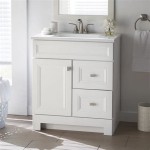How to Choose Bathroom Floor and Wall Tiles
The bathroom is a space where both functionality and aesthetics are paramount. It is a place for personal hygiene, relaxation, and rejuvenation. The right flooring and wall tiles can significantly enhance the overall look and feel of this essential room. Choosing the appropriate tiles involves considering various factors, from material to style to budget. This article will guide you through the process of selecting the perfect bathroom floor and wall tiles.
1. Determine Your Bathroom's Style and Functionality
Before diving into the wide array of tile options, it's crucial to define the style and functionality you desire for your bathroom. Consider the following aspects:
- Style: Are you aiming for a modern, minimalist aesthetic, a classic and timeless look, a rustic farmhouse feel, or something else entirely? Choose tiles that complement your overall bathroom design.
- Functionality: Think about the practicalities of your bathroom. Do you need slip-resistant tiles for a wet area? Will you be using the bathroom for bathing children or pets, requiring easy-to-clean surfaces? These considerations will influence your tile choices.
- Size and Layout: Consider the dimensions of your bathroom and how the tiles will fit within the space. Large tiles can make a small bathroom feel more spacious, while smaller tiles can create a busy pattern.
2. Choose the Right Tile Material
Bathroom tiles are available in a multitude of materials, each with its own unique advantages and disadvantages. Understanding the characteristics of different tile materials is essential for making informed decisions.
- Ceramic Tile: A classic and affordable option, ceramic tiles are durable, water-resistant, and come in various colors and patterns. They are suitable for both walls and floors, but may be less slip-resistant than other materials.
- Porcelain Tile: A more durable and dense version of ceramic tile, porcelain offers exceptional water resistance and scratch resistance. It is an excellent choice for high-traffic areas and floors.
- Natural Stone Tile: Natural stone tiles, such as marble, granite, and slate, add elegance and sophistication to bathrooms. However, they can be more expensive and require regular sealing to maintain their beauty.
- Glass Tile: Glass tiles are beautiful and reflective, creating a sense of spaciousness and light. They are often used as accents or backsplashes.
- Mosaic Tile: Mosaic tiles consist of small pieces of various materials, creating intricate patterns and designs. They are ideal for adding a touch of artistry to bathrooms.
3. Consider Tile Size, Shape, and Color
The size, shape, and color of tiles can significantly impact the overall look and feel of your bathroom. Carefully consider these aspects:
- Size: Larger tiles create a sense of spaciousness, while smaller tiles add texture and visual interest. The size of your bathroom and the layout of the tiles should be considered.
- Shape: Square and rectangular tiles are the most common, but you can also find hexagonal, chevron, and other unique shapes. Experiment with different shapes to create visual impact.
- Color: Choose colors that complement your bathroom decor and create the desired mood. Light colors can make a bathroom feel larger and more airy, while dark colors create a more intimate and dramatic atmosphere.
Additionally, consider the grout color. Grout fills the gaps between tiles and can significantly influence the overall look. Choose a grout color that complements the tile color or creates a contrasting effect for a visually appealing finish.
4. Evaluate Durability and Maintenance
Bathroom tiles are exposed to moisture, humidity, and foot traffic. Therefore, selecting durable and easy-to-maintain tiles is crucial. Consider the following factors:
- Water Resistance: Tiles should be water-resistant or waterproof to prevent water damage and mold growth. Choose tiles with a low absorption rate for better moisture resistance.
- Scratch Resistance: For floors, choose tiles that are resistant to scratches and abrasion, especially if you have pets or children. Porcelain tiles are generally more scratch-resistant than ceramic tiles.
- Slip Resistance: Bathrooms can be slippery, so choose tiles with a high coefficient of friction (COF) for enhanced safety. Look for tiles with a textured surface or special anti-slip coatings.
- Cleaning: Select tiles that are easy to clean and maintain. Avoid tiles with intricate patterns or textured surfaces that can trap dirt and grime.
Ultimately, the best bathroom floor and wall tiles are those that meet your specific needs and preferences. With careful planning, consideration of factors like style, functionality, material, and maintenance, you can find the perfect tiles to create a beautiful and functional bathroom space you will enjoy for years to come.

Top Tips For Choosing Bathroom Tiles Tile Mountain

How To Choose Bathroom Tile Scott Mcgillivray

Top Tips For Choosing Bathroom Tiles Tile Mountain

How Do You Choose Tiles For A Bathroom Tile Warehouse

Best Tiles For Bathroom Materials Wise You Need To Explore

Everything You Need To Know About Choosing Bathroom Tiles Italia Ceramics

Top Tips For Choosing Bathroom Tiles Tile Mountain

How To Choose Bathroom Tile Scott Mcgillivray

Everything You Need To Know About Choosing Bathroom Tiles Italia Ceramics

A Beginner S Guide To Choosing Wall Tiles Ross Discount Home Centre
Related Posts







